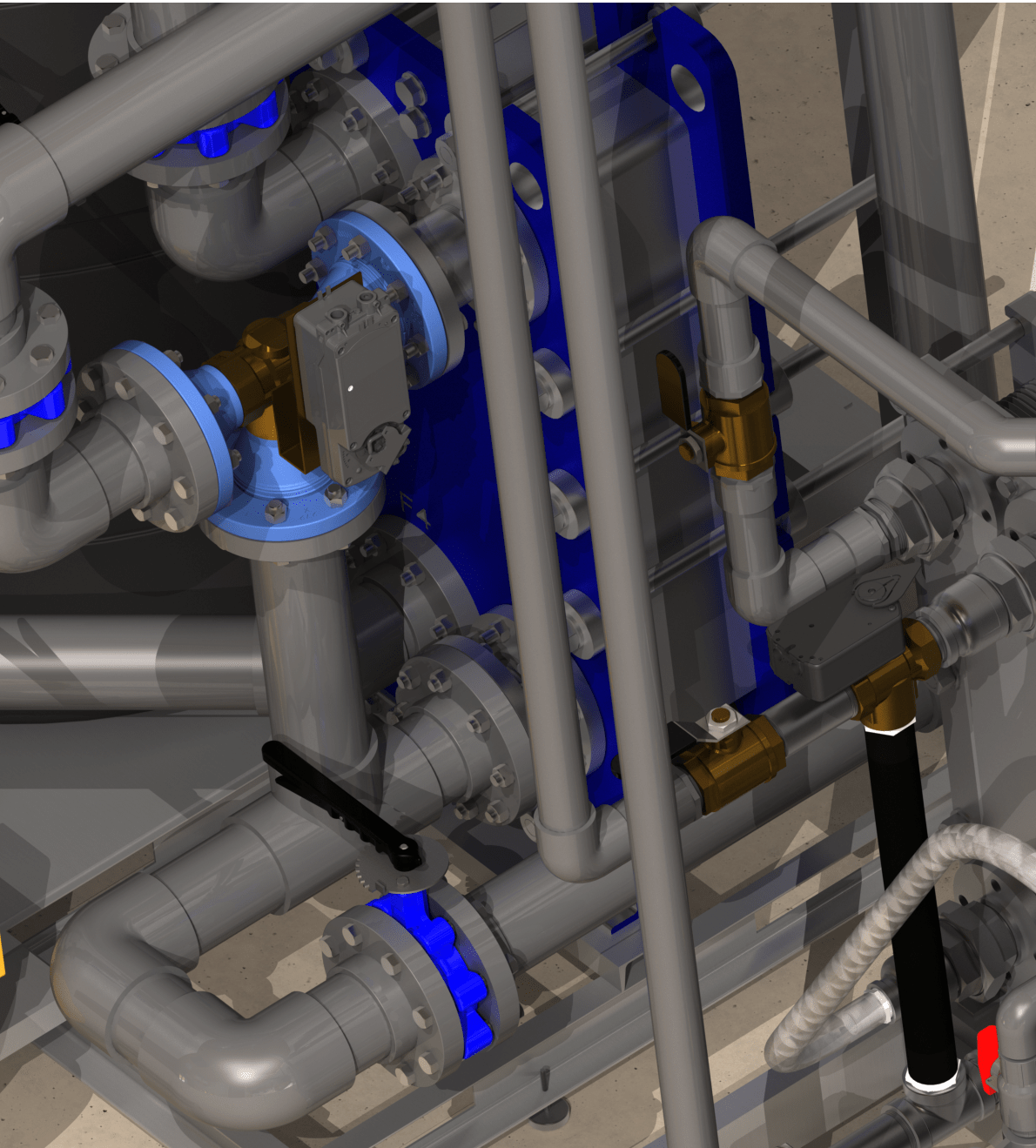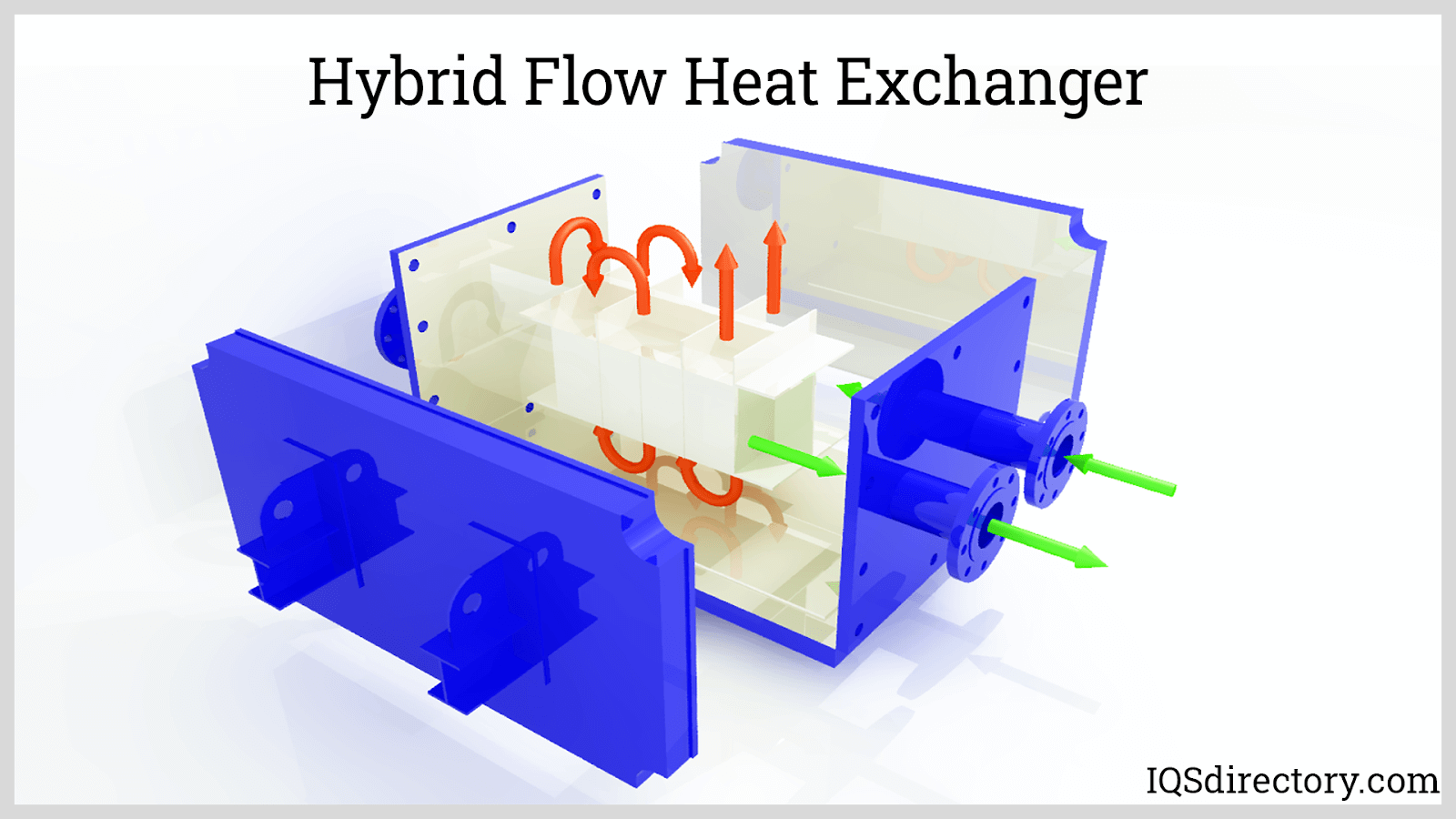Benefits of Choosing DVS Heat Transfer Systems for Compact Heat Exchanger Designs
A Comprehensive Guide to Choosing the Right Heat Transfer Solutions for Your Needs
Choosing the appropriate Heat transfer system is necessary for operational efficiency. Various systems satisfy various demands, influenced by factors such as temperature array and liquid kind. Understanding the concepts behind Heat transfer, such as convection, radiation, and transmission, is vital. Furthermore, examining power sources and upkeep methods can impact long-term performance. A closer exam of these factors to consider reveals just how to customize a system to certain requirements. What should one prioritize in this facility decision-making procedure?
Recognizing Heat Transfer: Secret Principles and Principles
Although Heat transfer might look like a straightforward concept, it incorporates a series of principles that are essential for efficient system layout. Recognizing these principles is vital for developers and designers that intend to maximize thermal performance in different applications. Conduction, for example, includes the transfer of Heat via solid materials, while convection refers to the motion of Heat within fluids. Radiation, one more vital principle, describes just how Heat can be moved through electromagnetic waves. Each of these systems plays a vital function in identifying just how energy relocates within a system. By thoroughly grasping these concepts, professionals can make enlightened choices, making certain that Heat transfer systems run effectively and fulfill the specific needs of their applications
Sorts Of Heat Transfer Solutions: A Review
Recognizing the principles of Heat transfer prepares for checking out the various kinds of Heat transfer systems available. Heat transfer systems can be classified mainly into 3 types: radiation, transmission, and convection. Transmission includes Heat transfer via solid products, counting on direct contact in between fragments. Convection, on the other hand, occurs in liquids (liquids and gases) where the motion of the fluid itself assists in Heat transfer. Radiation entails the transfer of Heat with electromagnetic waves and does not require a tool, permitting it to occur in a vacuum cleaner. Each kind of system has distinct attributes and applications, making it crucial for people and companies to thoroughly analyze their certain requirements when picking the most appropriate Heat transfer service.
Applications of Heat Transfer Solutions in Numerous Industries
Heat transfer systems play a necessary function throughout various markets, influencing effectiveness and item top quality. In industrial production processes, they assist in specific temperature control, while in food and beverage handling, they assure safety and preservation. Furthermore, cooling and heating and environment control systems count heavily on efficient Heat transfer to keep comfy environments.
Industrial Manufacturing Processes

Various commercial production procedures rely greatly on efficient Heat transfer systems to make the most of efficiency and boost product quality. In industries such as metalworking, Heat exchangers play an important function in maintaining excellent temperature levels throughout welding, spreading, and forging. These systems assure uniform Heat distribution, which is important for attaining wanted product buildings. Likewise, in the chemical production sector, Heat transfer systems facilitate precise temperature control during reactions, influencing yield and security. In fabric manufacturing, efficient Heat administration is crucial for dyeing and finishing processes, influencing shade consistency and textile quality. By picking appropriate Heat transfer technologies, producers can boost energy effectiveness and reduce functional expenses, inevitably bring about a much more sustainable and affordable manufacturing environment.
Food and Drink Processing
Effective Heat transfer systems are equally vital in the food and beverage processing market, where preserving optimal temperatures is critical for food safety and top quality. These systems play a necessary role in procedures such as food preparation, pasteurization, and sterilization, guaranteeing that items are safe for intake and maintain their nutritional worth. Heat exchangers, for example, effectively move Heat between liquids, maximizing energy usage while minimizing temperature variations. Furthermore, refrigeration systems are fundamental for expanding and preserving subject to spoiling items shelf life. The choice of Heat transfer modern technology directly affects functional performance and item stability, making it vital for food and drink manufacturers to choose the ideal systems tailored to their particular processing requirements. This cautious option inevitably adds to customer satisfaction and food safety and security.

A/c and Climate Control
While numerous markets rely on Heat transfer systems for efficiency, A/C (Heating, Air Flow, and Air Conditioning) plays a crucial role in keeping indoor environment control throughout various setups. These systems utilize Heat transfer concepts to manage temperature, air, and moisture quality, guaranteeing comfort and safety and security in domestic, business, and commercial atmospheres. Appropriately made heating and cooling systems improve energy effectiveness, reduce operational expenses, and lessen environmental influence. In industrial buildings, for example, effective climate control adds to employee efficiency and customer complete satisfaction. In commercial applications, a/c systems aid keep perfect problems for devices procedure and item conservation. Selecting the appropriate Heat transfer system is vital for meeting certain environment control needs and attaining general system efficiency.
Reviewing Power Resources for Heat Transfer Systems
In evaluating energy resources for Heat transfer systems, a contrast of renewable resource alternatives and fossil gas factors to consider is essential. Get More Information Eco-friendly resources, such as solar and wind, offer lasting choices that can lower ecological impact. On the other hand, fossil gas stay prevalent due to their well established framework and energy density, motivating a cautious evaluation of both choices.
Renewable Power Options

Nonrenewable Fuel Source Considerations
Examining nonrenewable fuel source considerations is important for the effectiveness and sustainability of Heat transfer systems. Nonrenewable fuel sources, such as gas, oil, and coal, are traditional power sources that give significant Heat result, making them popular options for household and industrial applications. Their environmental influence, including greenhouse gas discharges and source exhaustion, elevates problems. When selecting a warm transfer system, it is vital to evaluate the schedule, price, and regulatory aspects related to these gas. In addition, the effectiveness of nonrenewable fuel source systems should be considered, as higher performance can reduce some environmental drawbacks. Inevitably, a balanced approach evaluating efficiency and sustainability can guide decision-makers toward the most suitable Heat transfer option for their specific demands.
Elements to Think About When Choosing a Warmth Transfer System
Selecting an ideal Heat transfer system requires mindful factor to consider of various variables that can considerably affect effectiveness and performance. One important element is the operating temperature level variety, which determines the materials and style ideal for the application. Furthermore, the sort of liquid used in the system-- whether gas or liquid-- affects Heat transfer performance and compatibility. The system's size and ability should line up with the specific demands of the operation to avoid inefficiencies. Power source availability is likewise essential, here are the findings affecting operating prices and sustainability. Additionally, the installation setting, including room constraints and access for maintenance, plays a considerable duty in system selection. Finally, regulative compliance and safety and security requirements should be considered to ensure the system fulfills all lawful demands.
Maintenance and Performance Optimization for Heat Transfer Equipments
Preserving Heat transfer systems is crucial for making sure maximum effectiveness and long life. Routine maintenance tasks, such as cleaning Heat exchangers and checking insulation, help prevent performance losses due to fouling and thermal linking. Furthermore, keeping track of system specifications, including pressure and temperature level, enables very early detection of abnormalities, minimizing downtime and pricey repair services. Implementing a precautionary upkeep schedule can optimize efficiency and expand the lifespan of elements. Moreover, upgrading to sophisticated control systems can improve functional performance by adapting to varying problems and loads. By focusing on upkeep and performance optimization, drivers can achieve minimized power usage, lower functional expenses, and improved general system reliability, ultimately bring about far better resource use and an extra lasting procedure.
Future Patterns in Heat Transfer Technologies
As sectors increasingly prioritize sustainability and energy performance, future fads in Heat transfer innovations are readied to undertake considerable makeovers. Innovations such as innovative products, consisting of carbon nanotubes and nanofluids, promise improved thermal conductivity and effectiveness. In addition, the assimilation of renewable resource resources right into Heat transfer systems is getting momentum, promoting green options. Smart technologies, including IoT sensing units, are expected to reinvent surveillance and control, allowing real-time information analysis for optimized efficiency. In addition, the advancement of compact and modular systems will certainly assist in simpler installation and upkeep, satisfying varied applications. These improvements show a change in the direction of more sustainable, efficient, and versatile Heat transfer services, straightening with worldwide power goals and environmental criteria.
Frequently Asked Inquiries
What Are the Environmental Effects of Heat Transfer Systems?
The environmental impacts of Heat transfer systems can include greenhouse gas emissions, energy intake, and prospective thermal pollution. In addition, incorrect disposal of products and inefficiencies can add to resource depletion and community disturbance.
Exactly how Do I Calculate the Cost-Effectiveness of a Heat Transfer System?
To compute the cost-effectiveness of a warmth transfer system, one have to analyze preliminary expenses, functional expenses, upkeep requirements, and energy effectiveness, contrasting these variables versus the anticipated life expectancy and performance of the system.
Can Heat Transfer Equipment Be Made Use Of in Residential Settings?
Heat transfer systems can undoubtedly be made use of in property setups. They provide efficient home heating and cooling remedies, making homes more comfortable while possibly lowering power expenses. Their adaptability permits numerous applications in household atmospheres.
What Safety And Security Laws Put On Heat Transfer Equipments?
Safety and security policies for Heat transfer systems typically include guidelines on maintenance, procedure, and installment. Compliance with neighborhood building ordinance, supplier requirements, and industry standards is vital to ensure risk-free and efficient system performance in numerous applications.
Exactly How Do Different Materials Affect Heat Transfer Efficiency?

Transmission, for circumstances, includes the transfer of Heat through solid materials, while convection refers to the movement of Heat within fluids. Understanding the principles of Heat transfer lays the foundation for discovering the various types of Heat transfer systems offered. Heat exchangers, for circumstances, successfully transfer Heat in between fluids, enhancing energy use while decreasing temperature changes. In reviewing energy sources for Heat transfer systems, this page a contrast of renewable power alternatives and fossil fuel factors to consider is vital. Steels, such as copper and light weight aluminum, conduct Heat efficiently, whereas insulators like rubber and glass reduce down Heat circulation.